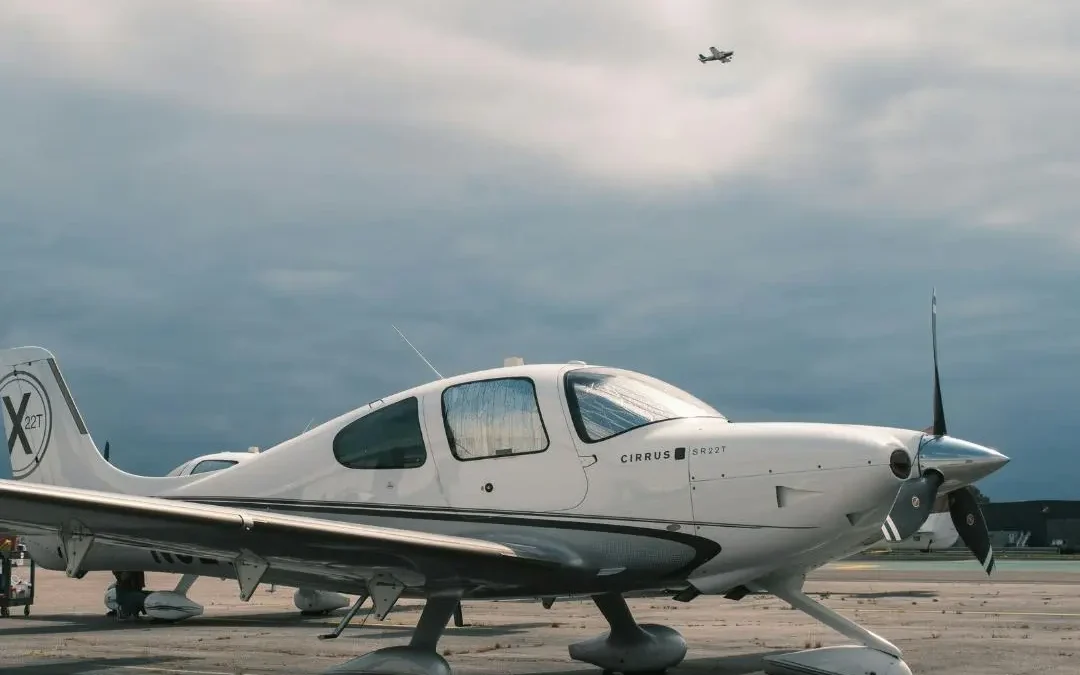
Jan 23, 2024 | Cirrus Training
Introduction
Becoming a proficient pilot involves comprehensive training, especially when it comes to flying advanced aircraft like Cirrus. Cirrus Transition Training is a crucial component of private pilot training at Mach 1 Aviation. In this blog post, we’ll delve into the essential aspects of Cirrus Transition Training, providing insights into the training process and why it’s a key element in becoming a skilled Cirrus pilot.
Understanding Cirrus Transition Training: A Key Component of Private Pilot Training with Mach 1 Aviation
Cirrus Transition Training is designed to acquaint pilots with the unique features and capabilities of Cirrus aircraft. At Mach 1 Aviation, this training is integrated into the private pilot training program, ensuring that aspiring pilots are well-prepared to handle the intricacies of Cirrus aircraft. Here’s why Cirrus Transition Training is a crucial step:
- Advanced Avionics Understanding: Cirrus aircraft are equipped with advanced avionics systems. Transition Training focuses on ensuring pilots are proficient in using and navigating these sophisticated systems.
- Aircraft Systems Familiarity: Pilots undergo in-depth training on the specific systems and features of Cirrus aircraft, including the Cirrus Airframe Parachute System (CAPS), autopilot, and more.
- Flight Maneuver Proficiency: Transition Training includes hands-on flight maneuvers, emphasizing the unique handling characteristics of Cirrus aircraft, such as the side yoke control system.
- Emergency Procedures: Pilots are trained in emergency procedures specific to Cirrus aircraft, enhancing their ability to respond effectively in critical situations.
Why Cirrus Transition Training Matters
- Safety: Comprehensive knowledge of Cirrus aircraft enhances safety during flights, ensuring that pilots can confidently operate these advanced planes.
- Operational Proficiency: Transition Training instills operational proficiency, allowing pilots to make the most of Cirrus aircraft’s capabilities for a smoother and more enjoyable flying experience.
- Confidence Building: Mastery of Cirrus Transition Training builds confidence in pilots, empowering them to tackle diverse flying conditions with ease.
Enrolling in Cirrus Transition Training with Mach 1 Aviation
At Mach 1 Aviation, we prioritize providing top-notch training programs, including Cirrus Transition Training. Aspiring pilots can enroll in our private pilot training program, where Cirrus Transition Training is seamlessly integrated. Our experienced instructors guide you through the training process, ensuring you emerge as a confident and skilled Cirrus pilot.
Embark on Your Cirrus Pilot Journey with Mach 1 Aviation
In conclusion, Cirrus Transition Training is a vital component of private pilot training at Mach 1 Aviation. Understanding the intricacies of Cirrus aircraft sets the foundation for a successful and fulfilling journey as a Cirrus pilot. If you’re ready to embark on this exciting aviation adventure, contact us at [phone number] or visit our website to enroll in Cirrus Transition Training and experience flight excellence with Mach 1 Aviation.

Dec 5, 2023 | Blog, Cirrus Training
Are you a pilot eager to elevate your flying skills and broaden your aviation horizons? Perhaps you’re contemplating Cirrus transition training, a specialized program tailored for pilots transitioning to the cutting-edge Cirrus aircraft. In this blog post, brought to you by Mach 1 Aviation, we’ll explore the duration of Cirrus transition training, providing you with valuable insights to plan your schedule effectively.
Exploring Cirrus Transition Training
Before delving into the timeline, it’s crucial to grasp the essence of Cirrus transition training. This specialized program caters to licensed pilots making the shift from other aircraft types to Cirrus planes. The curriculum zeroes in on mastering the intricacies of Cirrus aircraft systems, avionics, and handling characteristics.
Cirrus Aircraft boasts state-of-the-art avionics, featuring the Garmin Perspective suite, and safety innovations like the Cirrus Airframe Parachute System (CAPS). Transition training comprehensively covers these elements, ensuring pilots can adeptly operate these advanced systems with confidence and safety in mind.
The Duration of Cirrus Transition Training
The timeframe for completing Cirrus transition training is contingent on various factors, such as your previous flight experience, training frequency, and adaptability to new information and skills.
As a general guideline, pilots with average flight experience should anticipate dedicating approximately 10-15 hours of flight time over three to five days for a comprehensive Cirrus transition training. However, this is an estimate, and individual variations may occur—some pilots may require more time, while others may need less.
A Detailed Look at the Training Schedule
Day 1-2: Ground School & Basic Introduction
The initial days typically focus on ground school sessions. Here, you’ll delve into the specifics of Cirrus aircraft systems, gaining insights into the Garmin Perspective avionics suite and other unique features like CAPS. Additionally, you’ll receive a foundational introduction to piloting the aircraft.
Day 3-4: Flight Training
Once the theoretical aspects are covered, practical flight training ensues. This hands-on experience includes take-offs, landings, and in-flight maneuvers. Pilots will also practice utilizing the avionics suite and other systems during flight.
Day 5: Check Ride & Certification
The culmination of your training involves a check ride with an instructor. This evaluation assesses your proficiency in flying a Cirrus aircraft. Successful completion results in the awarding of your Cirrus transition training certification.
It’s essential to recognize that while this timeline is standard, your personal schedule may necessitate adjustments.
Maximizing Your Cirrus Transition Training Experience
To ensure an enriching Cirrus transition training experience and timely completion, consider the following tips:
- Regular Practice: Schedule consistent training sessions to reinforce knowledge and facilitate continuous improvement.
- Pre-Study: Familiarize yourself with Cirrus aircraft systems and performance characteristics before commencing training to streamline the learning curve.
- Choose Experienced Instructors: Opt for instructors with comprehensive experience in Cirrus aircraft, ensuring a thorough understanding of their systems and features.
Take Flight with Mach 1 Aviation!
Embark on a journey of aviation excellence with Mach 1 Aviation. Elevate your skills and proficiency through our specialized Cirrus transition training. Don’t just aspire to finish quickly—strive for comprehensive knowledge and confidence in flying Cirrus aircraft safely and proficiently.
Ready to soar to new heights? Contact Mach 1 Aviation today to schedule your Cirrus transition training appointment and embark on a thrilling adventure in the world of advanced aviation!


